Tom's Guide Verdict
The Razer Blade 16 (2024) has long been one of our favorite gaming laptops and this year’s model takes things up a notch with a beautiful, 240Hz OLED display. Graphics options remain mostly the same but the processor has gotten an upgrade too.
Pros
- +
Excellent cooling
- +
Wide array of ports
- +
Top notch performance
- +
Comfy keyboard and trackpad
- +
Stunning 240Hz OLED display
Cons
- -
Expensive starting price
- -
Fans can get loud with 4K gaming
Why you can trust Tom's Guide
The Razer Blade 16 is a powerful yet refined gaming laptop that justifies its higher price with excellent build quality and impressive graphics.
Part portable gaming powerhouse, part desktop replacement, this year’s model adds a stunning, 240Hz OLED panel and Wi-Fi 7 for even faster downloads. The new Razer Blade 16 also comes with a 330W GaN charger to help recharge its 95.2 WHr battery and is equipped with an Intel Raptor Lake processor. Graphics are relatively unchanged with Nvidia’s RTX 40 series GPUs, though the base model now costs more as Razer no longer offers the RTX 4060 as a starting option.
All told, Razer has iterated on what made last year’s Blade 16 one of the best gaming laptops without any major upgrades, specs-wise. Still, there’s enough here to skip the previous model, especially if you’re a sucker for OLED displays. The Razer Blade 16 is a hefty investment even at its starting configuration but if you can afford it, you’d be hard pressed to find a gaming laptop this powerful that looks this good.
Razer Blade 16 (2024): Cheat Sheet
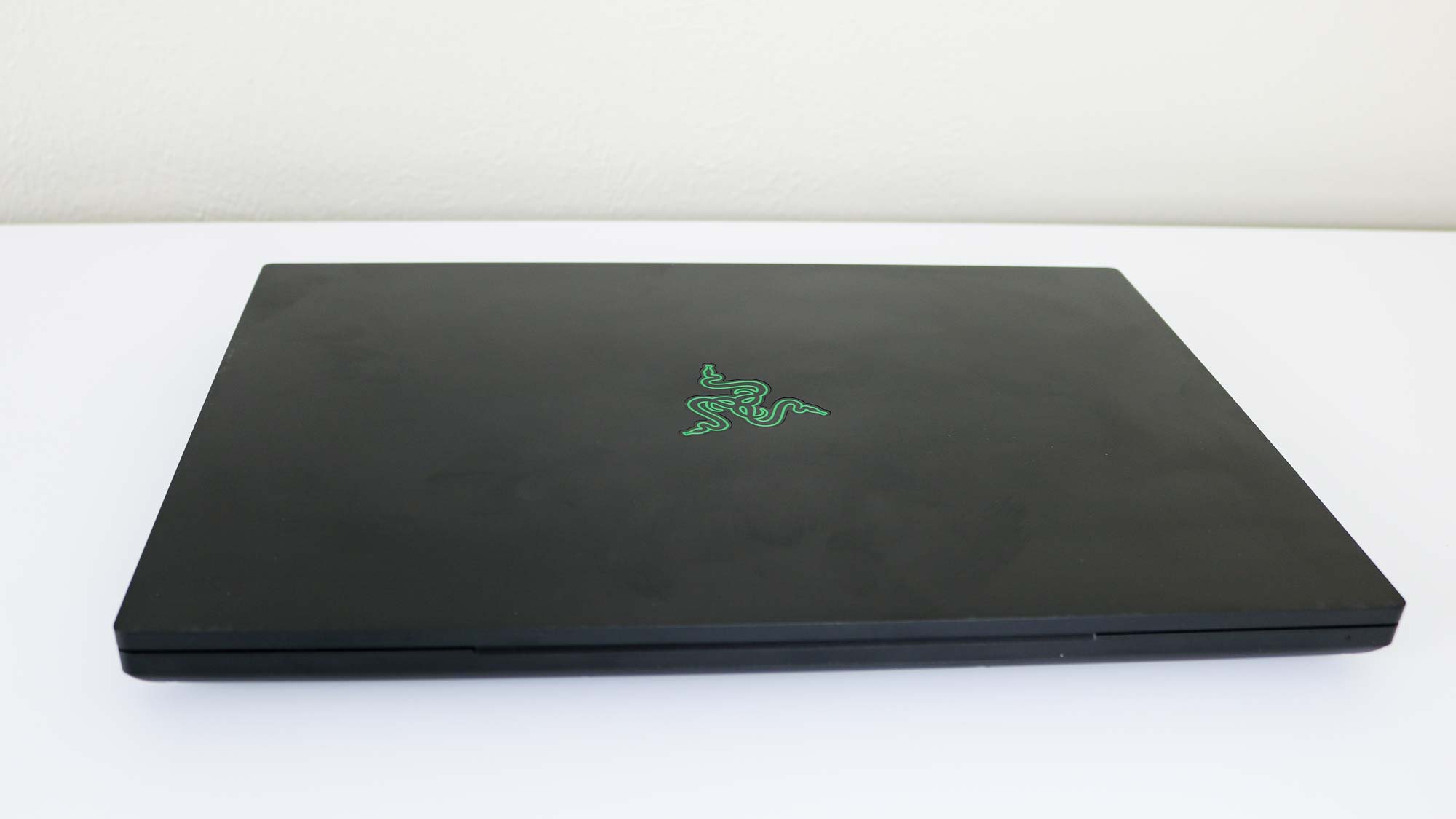
What is it? A sleek, all-black gaming laptop with just a few subtle hints of neon green.
Who is it for? Gamers that want a powerful laptop for both work and play that looks professional.
What does it cost? $2,999 to start, $4,200 as configured.
What do we like? It consistently delivers powerful performance and excellent visuals thanks to its stunning 16-inch, 240Hz OLED display.
What don’t we like? It can get loud, battery life is worse than last year’s model and it’s still a pricey investment.
Razer Blade 16 (2024): Specs
| Row 0 - Cell 0 | Razer Blade 16 (2024) entry-level | Razer Blade 16 (2024) as reviewed) |
| Price | $2,999 | $4,200 |
| Display | 16" QHD+ 240 Hz, 16:10 (2560 x 1600 WQXGA) | 16" QHD+ 240Hz OLED (2560 x 1600) |
| CPU | Intel Core i9-14900HX | Intel Core i9-14900HX |
| GPU | NVIDIA GeForce RTX 4070 (8GB GDDR6 VRAM) | NVIDIA GeForce RTX 4090 (16GB GDDR6 VRAM) |
| Memory | 16 GB DDR5-5600MHz | 32 GB DDR5-5600MHz |
| Storage | 1 TB SSD (M.2 NVMe PCIe 4.0 x4) | 2 TB PCIe 4.0 NVMe M.2 SSD |
| Ports | 1 x Thunderbolt 4, 1 x USB-C 3.2 Gen 2, 3 x USB-A 3.2 Gen 2, 1 x HDMI 2.1, SD Card Reader | 1 x Thunderbolt 4, 1 x USB-C 3.2 Gen 2, 3 x USB-A 3.2 Gen 2, 1 x HDMI 2.1, SD Card Reader |
| Connectivity | Wi-Fi 7, Bluetooth 5.4 | Wi-Fi 7, Bluetooth 5.4 |
| Size | 0.87 x 9.61 x 13.98 inches | 0.87 x 9.61 x 13.98 inches |
| Weight | 5.40 pounds | 5.40 pounds |
Razer Blade 16 (2024): The ups
The Razer Blade 16 may be more of an iterative upgrade over last year’s model but there’s still plenty of worthwhile additions. From its 240Hz OLED display to its overclockable Intel Core i9-14900HX processor to its RTX 4090 graphics card, this is a beast of a gaming laptop but with an elegant style.
That same sleek design
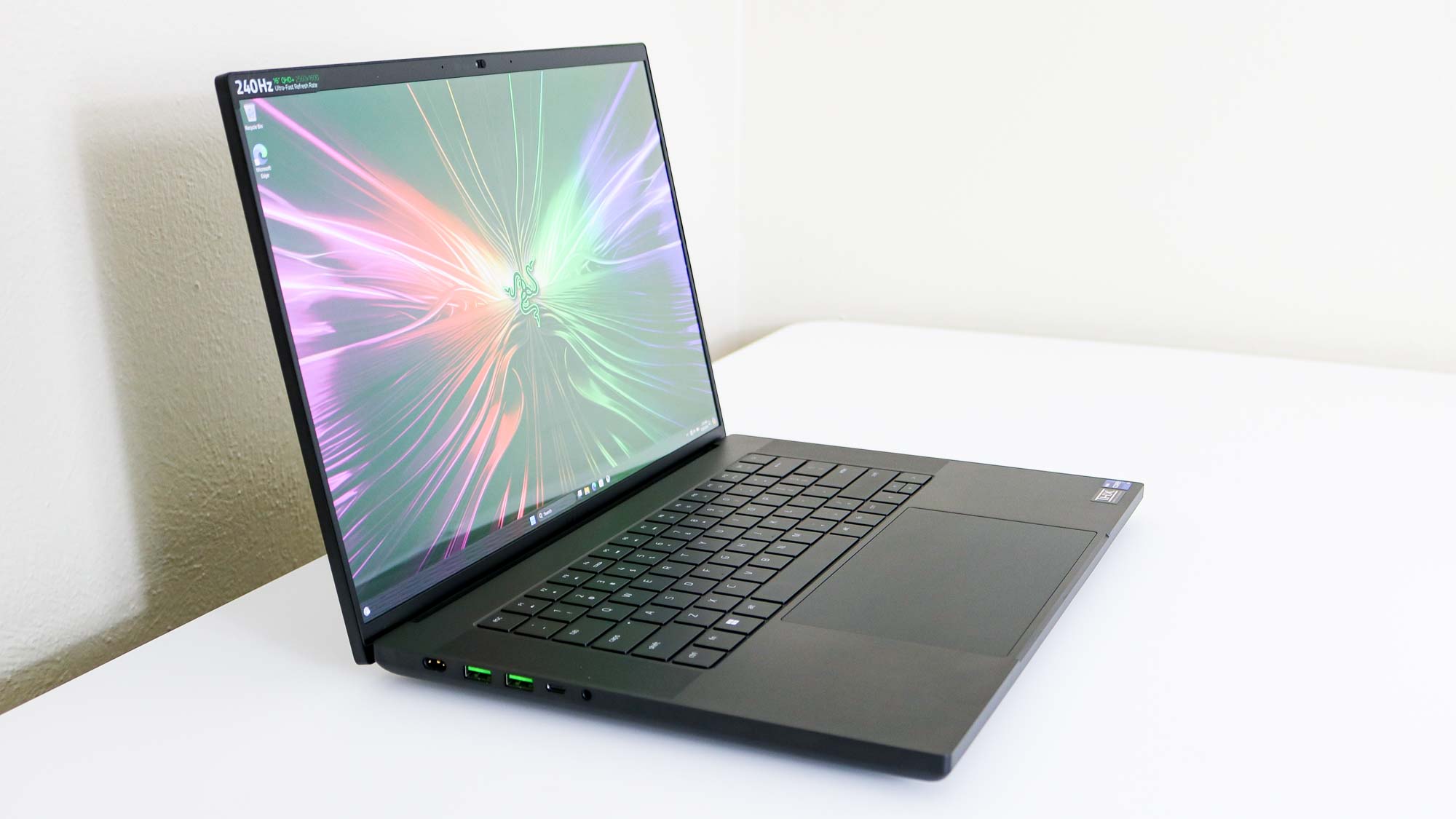
Not much has changed over the years when it comes to the Razer Blade 16’s design. You still get an aluminum unibody chassis with a sand-blasted and anodized finish that will turn heads for all the right reasons. While not overly flashy, there are green accents in its USB ports along with an illuminated Razer logo on its lid.
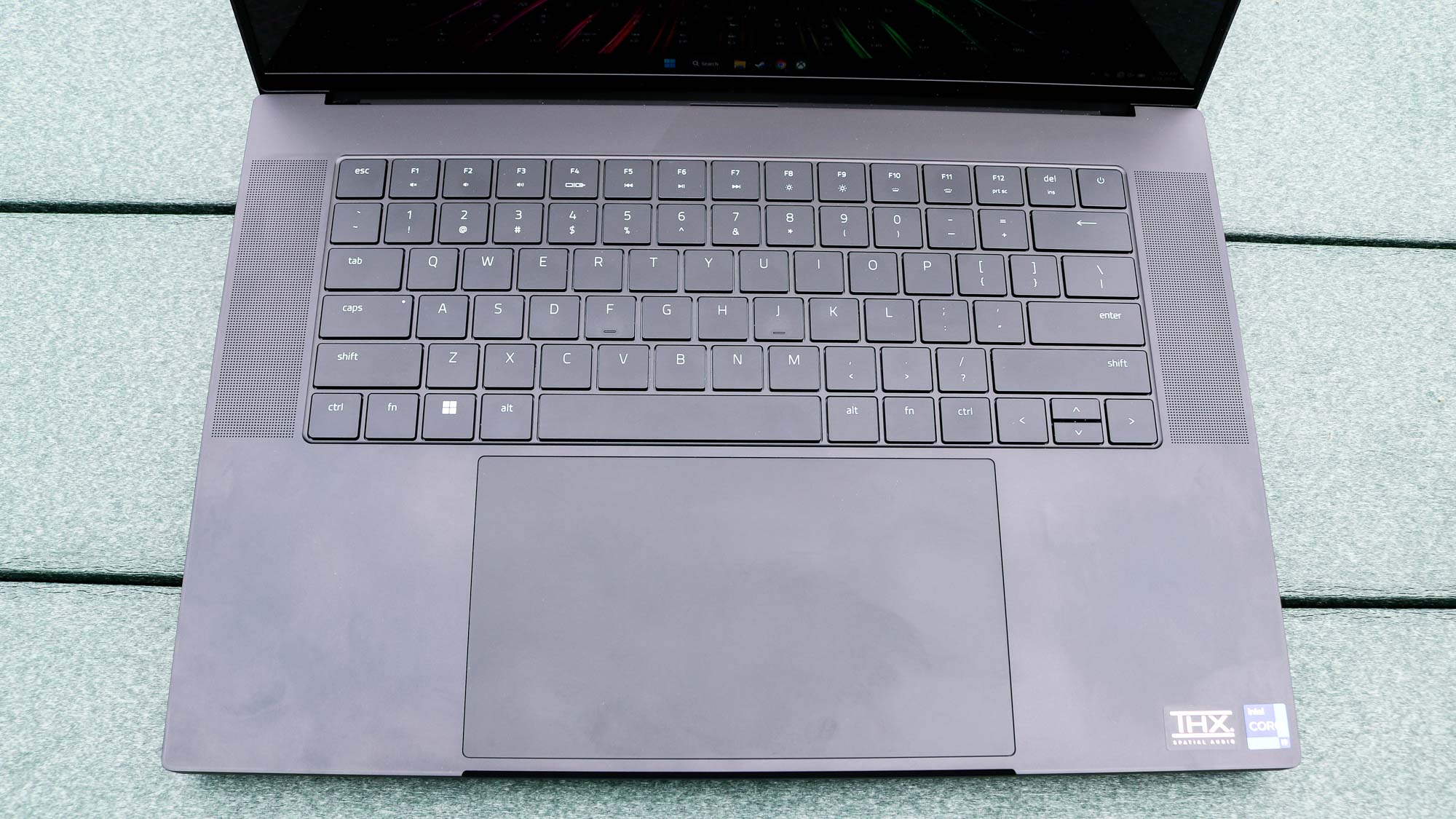
I love having a centered keyboard instead of an offset, full-sized one and I found the keys to have just the right amount of travel. The keyboard is also backlit and doesn’t feel cramped at all. The clickable, glass trackpad is quite large too and I found it to be very responsive and smooth when scrolling through webpages.
Even with its larger 16-inch, 16:10 screen, the Razer Blade 16 doesn’t feel overly bulky like some other larger gaming laptops do. Also, at 14 x 9.6 x 0.87 inches and 5.3 pounds, you can still easily slip this device into a backpack without feeling too weighed down.
Packed with power
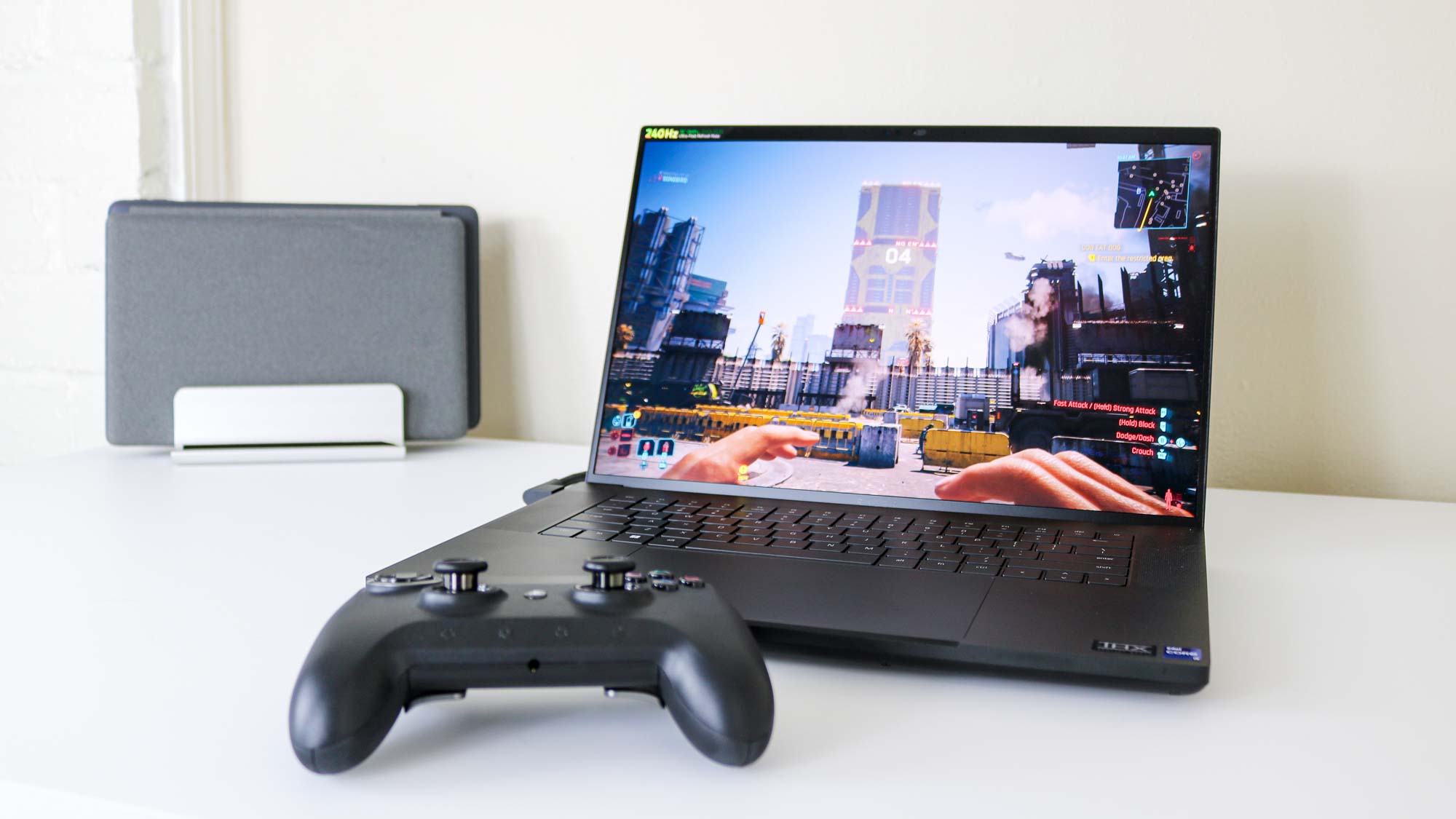
Razer didn’t sacrifice power with the new Blade 16. With an Intel Core i9-14900HX processor, a Nvidia RTX 4090 graphics card and 32GB of DDR5 memory, this is a powerful machine that can run the best Steam games at its native resolution of 2560 x 1600.
| Row 0 - Cell 0 | Razer Blade 16 (2024) | Alienware x16 R2 | Lenovo Legion Pro 5 Gen 8 |
| Geekbench 6 single-core | 2884 | 2452 | 2034 |
| Geekbench 6 multi-core-core | 17461 | 13874 | 12401 |
| Disk speed test | 1833.02 MBps | 1775.6 MBps | 2149.5 MBps |
| Handbrake video editing test | 2:48 | 3:33 | 4:05 |
During my own testing, I was able to play Cyberpunk 2077: Phantom Liberty with Ray Tracing enabled and the graphics turned up to ultra at 30 frames per second (fps). However, dropping the resolution down to 1080p let me play at a steady 60fps. Older titles fared even better, and in our testing, Shadow of the Tomb Raider hit 120fps with the settings maxed out while Metro Exodus ran at 60fps in extreme mode.
When it came to working on the Razer Blade 16, performance was just as snappy. Apps launched quickly and I could use multiple Chrome windows with dozens of tabs open simultaneously.

Razer didn’t skimp on ports either with Thunderbolt 4 and two USB-A ports on one side along with another USB-A port, a USB-C port, an HDMI port and a full-size SD card reader on the other. The port selection and the larger, 16:10 display make the Razer Blade 16 as well suited for gaming as it is for creatives.
| Row 0 - Cell 0 | Razer Blade 16 (2024) | Alienware x16 R2 | Lenovo Legion Pro 5 Gen 8 |
| Metro Exodus Enhanced Edition | 113 | 105 | 107 |
| Red Dead Redemption 2 | 120 | 89 | 77 |
| Far Cry 6 | 111 | 88 | 97 |
| Shadow of the Tomb Raider | 164 | 117 | 121 |
A head-turning display
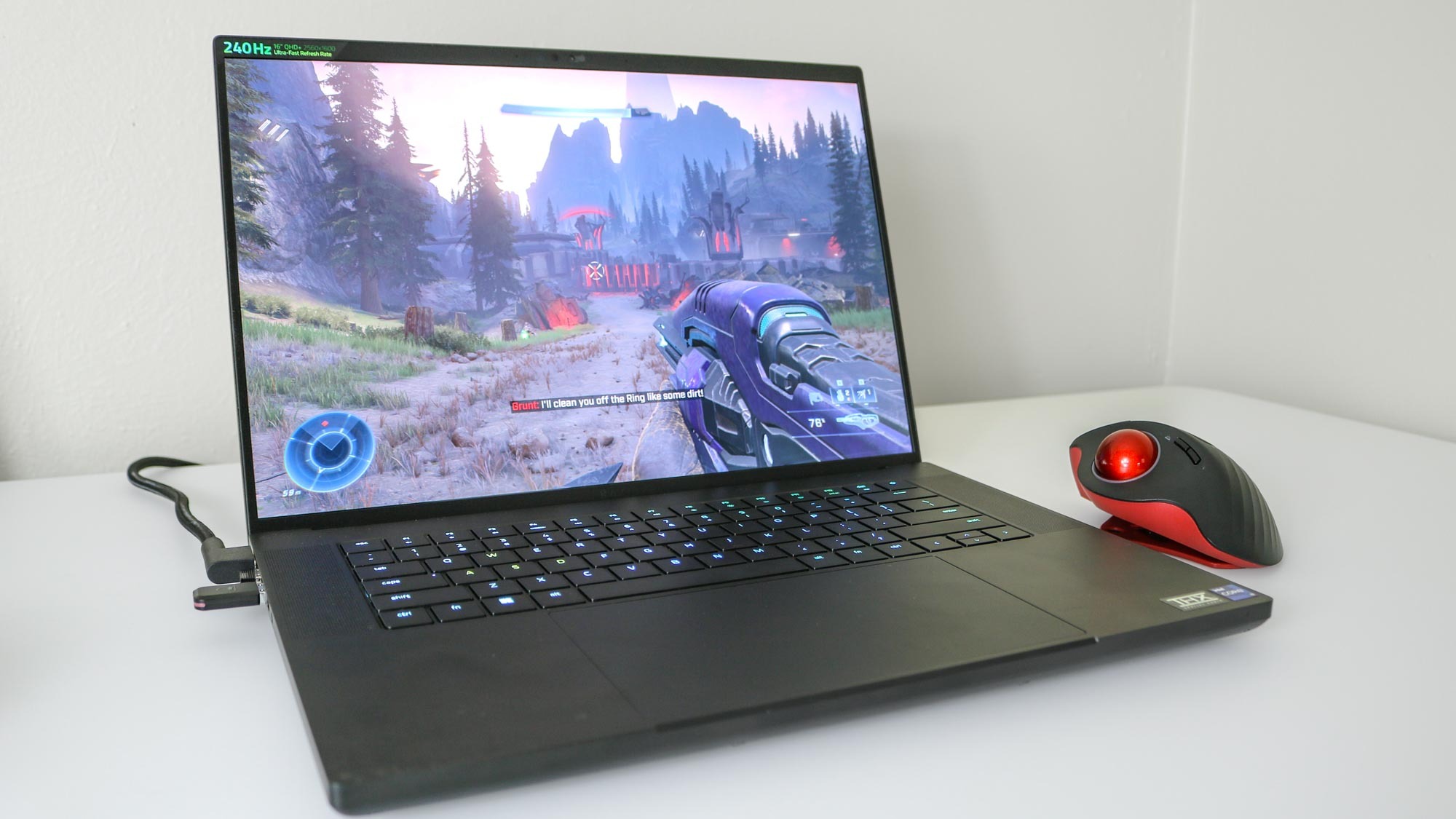
The biggest thing that sets the Razer Blade 16 apart from last year’s model is its new, 240Hz OLED display. However, you can still opt for last year’s dual display mini-LED screen which lets you swap between a 4K and FHD resolution depending on the task at hand.

From my experience, the OLED display is the better choice. Not only is it cheaper, but the colors really pop in both games and videos. Even though I prefer my TV’s larger screen, I actually watched all of Amazon Prime’s Fallout TV series on the Razer Blade 16 and I was immediately drawn in by how the wedding scene in Vault 33 looked on the laptop.
You also have enough screen real estate to have two full-size windows open side by side. However, the Razer Blade 16 does have a glossy display which is great for gaming in the evening but less so during the day when I noticed quite a bit of glare.
| Row 0 - Cell 0 | Razer Blade 16 (2024) | Alienware x16 R2 | Legion 5 Pro |
| Brightness (nits) | 378.6 | 334.4 | 472 |
| sRGB color gamut (%) | 110.2 | 114.4 | 116 |
| Delta-E | 0.21 | 0.76 | 0.3 |
Razer Blade 16 (2024): The downs
The Razer Blade 16 has quite a lot going for it as both a gaming and work machine but the timing of its release means that this isn’t an AI laptop. Battery life is also another downside, especially as last year’s model lasted slightly longer on a single charge.
Not an AI laptop
As it was released at the beginning of this year, the Razer Blade 16 missed out on all of the hype surrounding AI laptops, for better or worse. It’s also not one of Microsoft’s Copilot+ PCs which at the moment feature Qualcomm’s Snapdragon X Elite and X Plus chips, though ones with Intel processors will be coming down the line.
If you’re buying the Razer Blade 16 primarily as a gaming machine, this will be of little or no concern. However, if you also plan on using it for work and regularly use Microsoft Copilot, you might be disappointed. With a Nvidia RTX 4090 under the hood, the Razer Blade 16 is more than powerful enough to run local AI models using its GPU though.
Keep your charger close

Gaming laptops like the Razer Blade 16 are known for their powerful performance but certainly not their battery life. With a discrete RTX 4090 GPU, this laptop uses a lot of power. Like I did, you’re probably going to want to keep it on the charger most of the time.
The Razer Blade 16 lasted 1 hour and 37 minutes in the PCMark 10 gaming battery life benchmark test which is longer than the Asus ROG Zephyrus G14 which lasted just over an hour. In our standard battery test, which involves continuous web surfing over Wi-Fi with the display set to 150 nits of brightness, it lasted just under 5 hours. Surprisingly though, last year’s Razer Blade 16 lasted 5 and a half hours during the same test.
With less than 7 hours of battery life, the Razer Blade 16 won’t be able to get you through a full work day. To compensate for this, Razer does include a GaN charger that is 60% smaller than other 330W chargers.
| Laptop | Battery life (web surfing hh:mm) | Battery life (Gaming PCMark 10 hh:mm) |
|---|---|---|
| Razer Blade 16 (2024) | 4:41 | 1:37 |
| Alienware x16 R2 | 6:31 | 1:19 |
| Legion Pro 5i Gen 8 (2023) | 4:38 | 0:59 |
| Lenovo Legion Pro 7i Gen 8 (2023) | 5:46 | 1:07 |
| ROG Strix G18 (2023) | 7:37 | 1:20 |
| Razer Blade 14 (2023) | 8:34 | 1:46 |
| Alienware x16 (2023) | 5:37 | 1:20 |
Razer Blade 16 (2024): Verdict
The Razer Blade 16 is a powerful gaming laptop that looks as good as it plays. It’s certainly an investment with a starting price of $2,999, but if you’re looking for a professional-looking desktop replacement you can travel with, this could be the perfect laptop for you.
As this is a gaming laptop, not having an onboard AI processor likely won’t be a dealbreaker. The same is true for battery life as you will probably keep the Razer Blade 16 plugged in most of the time. If you do want to use it for working while out and about, you’ll just need to work a bit faster or bring the included fast charger.
The Razer Blade 16 is an absolute powerhouse with a refined design that’s as comfortable to work on as it is to game on. If you have the budget for it, you won’t be disappointed with this gaming laptop.

Anthony Spadafora is the managing editor for security and home office furniture at Tom’s Guide where he covers everything from data breaches to password managers and the best way to cover your whole home or business with Wi-Fi. He also reviews standing desks, office chairs and other home office accessories with a penchant for building desk setups. Before joining the team, Anthony wrote for ITProPortal while living in Korea and later for TechRadar Pro after moving back to the US. Based in Houston, Texas, when he’s not writing Anthony can be found tinkering with PCs and game consoles, managing cables and upgrading his smart home.

